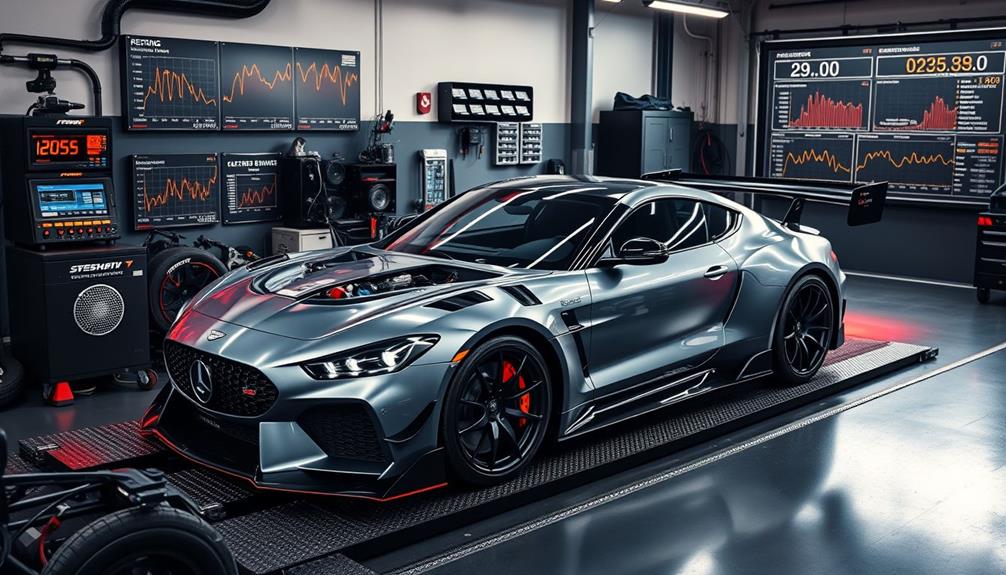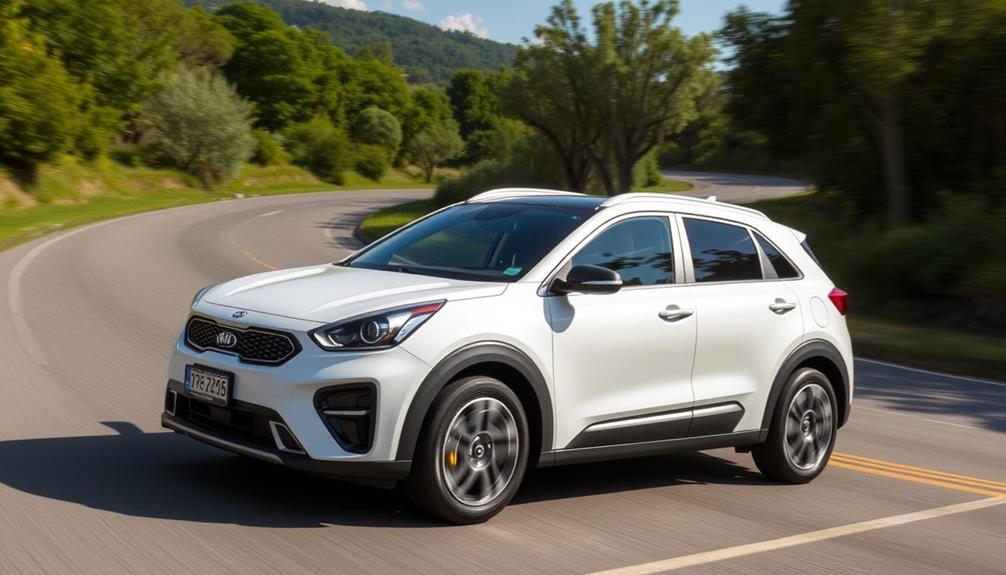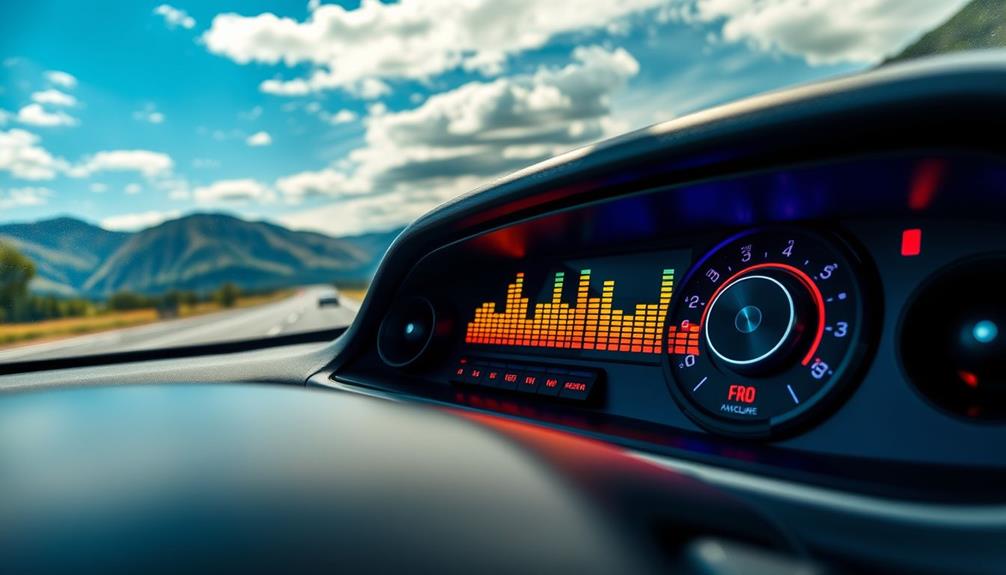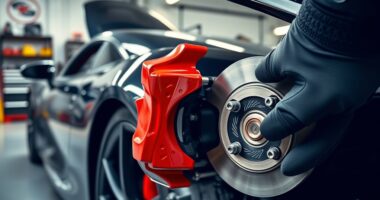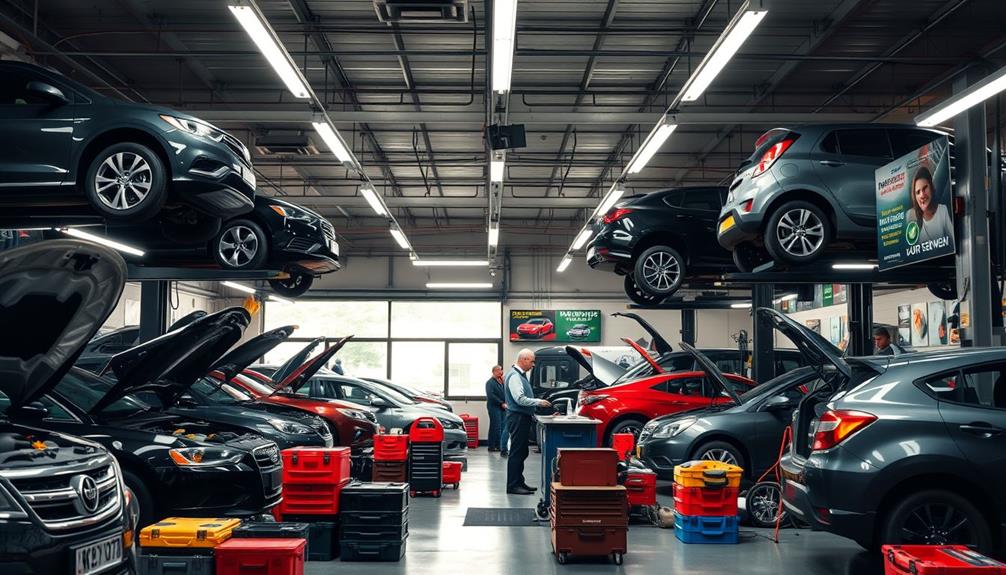Stage 3 car tuning releases your vehicle's maximum performance through major modifications. By upgrading to high-quality aftermarket turbos, you can gain anywhere from 70 to 300 horsepower over stock settings. You'll also need to enhance supporting systems, like intercoolers and fuel setups, to guarantee peak efficiency. Don't forget that adjustments to your ECU are essential for operating smoothly under these new conditions. While the added power is thrilling, you must also consider the balance between aggression and reliability. If you're enthusiastic to understand more about maximizing your vehicle's capabilities, there's plenty more to explore.
Key Takeaways
- Stage 3 tuning significantly enhances vehicle performance, increasing horsepower by 70hp to 300hp over stock configurations.
- It requires replacing factory turbos with high-quality aftermarket options for optimal power gains.
- Supporting modifications, such as upgraded intercoolers and fuel systems, are essential for reliable operation.
- ECU adjustments are necessary to manage the vehicle's performance under new tuning conditions effectively.
- Daily use considerations include high-octane fuel, enhanced cooling systems, and routine maintenance for engine longevity.
Understanding Stage 3 Tuning
Understanding Stage 3 tuning can feel overwhelming, but it's essential for maximizing your vehicle's performance. This tuning stage typically involves significant modifications, including turbo upgrades and methanol injection, leading to power gains of approximately 70hp to 300hp over stock configurations.
To access the full performance potential of your vehicle, you'll need to replace factory turbos with high-quality aftermarket turbos that enhance airflow and provide a more aggressive power delivery.
Achieving peak performance with Stage 3 tuning requires careful planning. Supporting modifications, such as upgraded intercoolers, improved fuel systems, and enhanced cooling solutions, are highly recommended to maintain engine reliability.
Without these upgrades, you risk compromising your engine's longevity, especially with the increased power output.
Stage 3 tuning also necessitates ECU adjustments to guarantee your vehicle operates efficiently under the new conditions.
However, keep in mind that due to the extensive modifications involved, this tuning stage is generally less reversible than lower stages.
You should consider the potential impacts on daily drivability and verify compliance with local regulations before diving in.
Performance Gains and Modifications
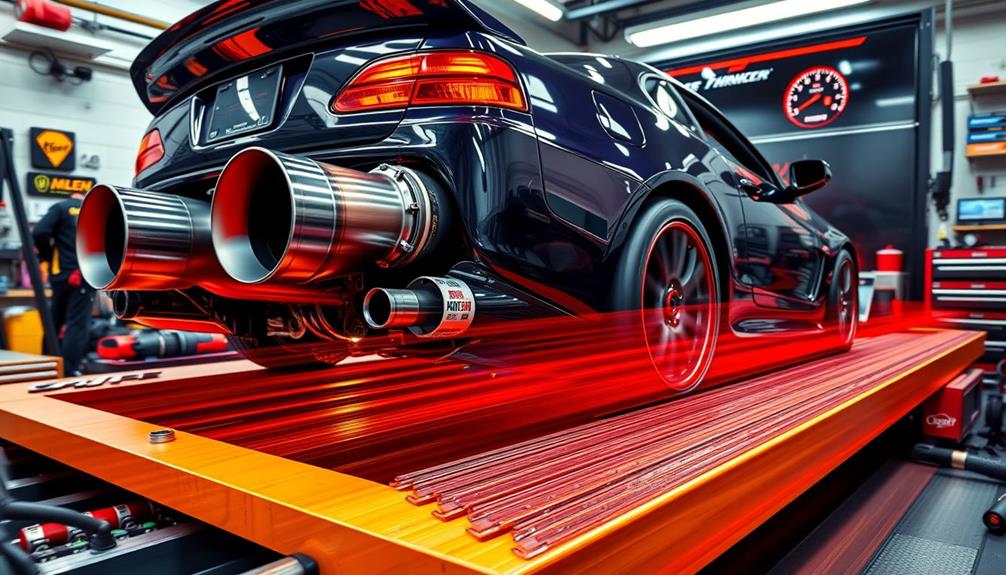
Achieving impressive performance gains with Stage 3 tuning requires a series of strategic modifications that greatly enhance your vehicle's capabilities. By upgrading to larger turbochargers, you can greatly increase horsepower, often seeing power boosts ranging from 70hp to 300hp.
Replacing the stock turbo with aftermarket options, like billet turbos, not only enhances power but also balances drivability and emissions.
In addition to turbo upgrades, enhancing your intercoolers is essential for optimizing air intake and managing the increased heat generated by higher performance levels. Cooling upgrades, such as improved radiators and oil coolers, guarantee your vehicle remains reliable under extreme conditions.
For instance, pairing M278 engines with M157 turbos can yield an impressive 600awhp when combined with the right tuning adjustments.
Moreover, incorporating methanol injection systems can further maximize your performance gains by providing additional cooling and increasing combustion efficiency.
These modifications work together to release your vehicle's full potential, allowing you to enjoy a thrilling driving experience while maintaining the reliability necessary for everyday use.
Embrace these enhancements, and you'll witness a remarkable transformation in your car's performance.
Considerations for Daily Use

When it comes to daily driving after Stage 3 tuning, you've got to weigh the excitement of increased power against the practicality of reliability. With power gains of 70hp to 300hp, the thrill is undeniable, but you'll need to take into account your engine's longevity.
The extensive tuning modifications, like upgrading turbos and installing methanol injection, can stress your engine and drivetrain, making robust supporting parts indispensable.
Access to high-octane fuel, specifically 93 octane or higher, becomes essential for maintaining performance reliability. Without it, you might face knock or other issues that could compromise your engine.
Additionally, enhanced heat management systems must be in place to prevent overheating during daily driving. This guarantees your engine operates within safe temperature ranges.
Routine maintenance and monitoring of engine parameters are critical post-tuning. Regular checks help you catch potential issues early, ensuring your vehicle remains reliable and performs at its best.
Ultimately, balancing the thrill of Stage 3 tuning with these practical considerations will help you enjoy your tuned car without compromising its everyday usability.
Frequently Asked Questions
What Does a Stage 3 Tune Do?
A Stage 3 tune boosts your car's power considerably, enhancing performance through upgrades like turbocharging and improved fuel systems. It transforms your vehicle into a high-powered machine, but it's not ideal for daily driving.
How Much HP Does Stage 3 Add?
Stage 3 tuning can boost your vehicle's horsepower considerably, typically adding anywhere from 70hp to 300hp. The exact increase depends on your modifications, like turbo upgrades and methanol injection systems, enhancing overall performance. In addition to increased horsepower, stage 3 tuning can also improve your vehicle’s torque and acceleration, making for a much more responsive and exciting driving experience. When combined with other stage 2 car tuning modifications, such as upgraded exhaust systems and high-flow air filters, the overall impact on your vehicle’s performance can be even more impressive. With the right combination of stage 2 and stage 3 tuning, your car can become a true high-performance machine on the road or track.
Is Stage 3 Tuning Safe?
Stage 3 tuning can be safe if you use quality components and have skilled professionals handle the process. Regular maintenance and monitoring are essential to avoid potential issues like overheating or engine failure.
Are Stage 3 Tunes Legal?
You'll find that Stage 3 tunes can be illegal in many areas due to emissions regulations. Before diving into modifications, check your local laws to avoid hefty fines and potential issues with insurance coverage.
Conclusion
In the grand adventure of car tuning, Stage 3 brings your ride to exhilarating heights. While you're releasing its full potential, remember to embrace the thrill of enhanced performance with a sprinkle of caution for everyday driving. It's all about finding that sweet spot where power meets practicality. So, as you hit the road, savor the journey and let your car be a proof of your passion for performance—after all, every twist and turn can be a joyride!
